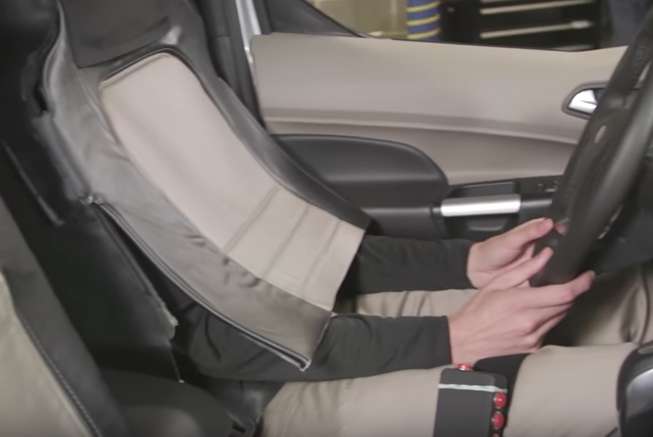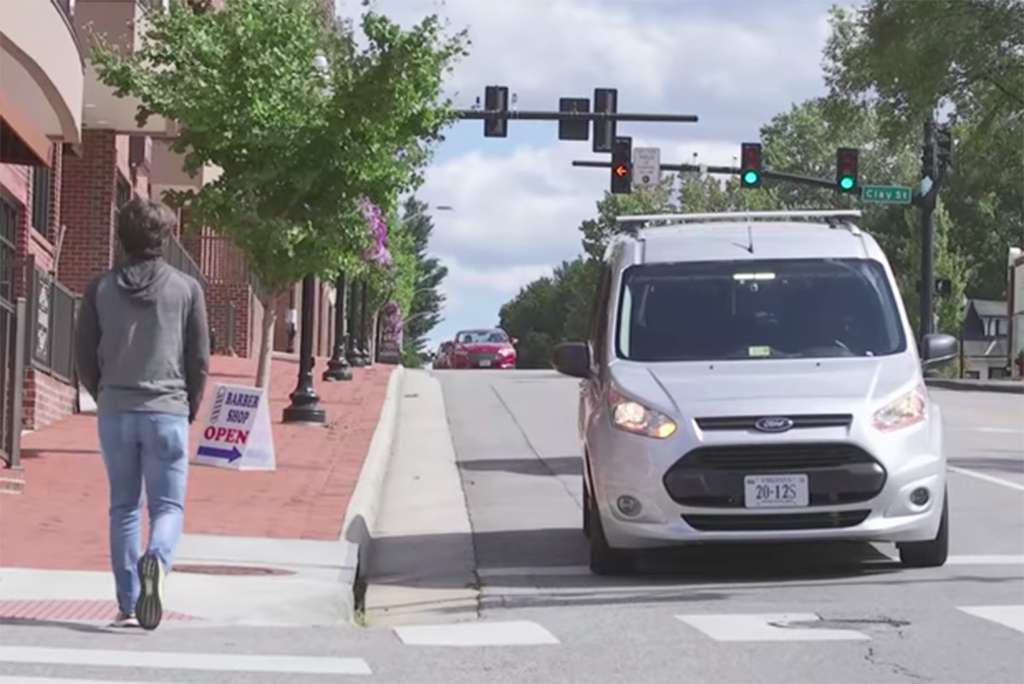Its sightings last month left many baffled, and now, car company Ford has explained why and how it sent a “driverless” car through the streets of Courthouse and Clarendon.
In a Medium post today (Wednesday), John Shutko, Ford’s Human Factors Technical Specialist for Self-Driving Vehicles, said the company was working with Virginia Tech to test ways for driverless cars to more effectively show its intentions to pedestrians and other road users.
Ford joined with the Virginia Tech Transportation Institute to test the technology — an animated light bar in the windshield of the video — and to see how those around reacted when they saw a car with no one in the driver’s seat.
“Anyone who has crossed a busy street likely knows the informal language between pedestrians and drivers,” Shutko wrote. “A driver might wave her hand to indicate to the pedestrian it’s okay to cross, or a pedestrian could throw up his hand like a stop sign to signal he plans to cross first. But what happens in the future, when self-driving vehicles operate without drivers – and in some cases, without anyone even in the vehicle itself?”
After being first reported by ARLnow.com, and famously further investigated by NBC4 reporter Adam Tuss — who was startled to discover a person in a seat costume inside — VT admitted it was behind the driverless car.
Ford said people are put in the cars — and dressed as car seats — for safety reasons, as self-driving technology is still in the early stages of testing and development.
MYSTERY SOLVED! Spoiler: It was us. Here’s why: https://t.co/jsWBBZokKG#CityofTomorrow https://t.co/WIJM8WXmdx
— Ford Motor Company (@Ford) September 13, 2017
The vehicle, a Ford Transit Connect van, had a light bar on top of its windshield. The bar pulsed white light back and forth when yielding, blinked rapidly before accelerating after a stop, or stayed solid when driving normally.
“Virtual reality testing with customers shows it takes a couple of exposures to signals like these before people truly understand what they mean,” Chutko wrote. “It takes even longer for signals to become ingrained in people’s brains – second nature, if you will. Through our testing, we believe these signals have the chance to become an accepted visual language that helps address an important societal issue in how self-driving vehicles interact with humans.”
Ford said it has logged more than 150 hours and around 1,800 miles in its tests in dense urban areas. Chutko said the time is right to create an industry standard for autonomous vehicle communications and to start to educate the public.





